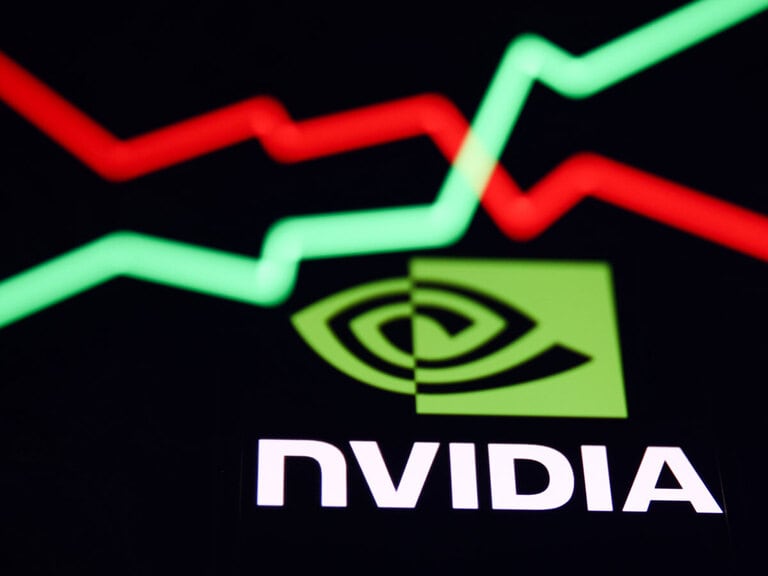The US jobs report for March, due out on Friday, will reveal whether hiring continued to outstrip expectations after two months of strong growth in payrolls. The coming week also brings interest rate decisions for the central banks of Australia and New Zealand, as well as earnings announcements from the likes of Saga and Levi Strauss.
Our top three economic and company events in order of importance are:
1. Friday – US non-farm payrolls (March)
The first two jobs reports of the year pointed to a tight US labour market. In February the US economy added 311,000 jobs, beating market forecasts of around 225,000, but fewer than January’s downwardly revised 504,000 new payrolls. The labour force participation rate increased to 62.5% in February, up from 62.4% in January, to reach its highest level since March 2020, indicating that US workers are gradually returning to the workforce after participation dipped during the pandemic. The unemployment rate rose to 3.6% in February, up from a 50-year low of 3.4% in January, as jobless claims continued to average around 196,000 per week. Average hourly earnings increased 4.6% in the year to February, up from January’s 4.4% but below market forecasts of a 4.7% rise.
With job vacancies at roughly 10.8m in January, the US jobs market remains resilient despite a series of high-profile layoffs this year, especially in the tech sector. The strength of the country’s labour market was supported by payroll processing firm ADP’s latest report, which showed a gain of 242,000 jobs in February, up from 106,000 in January.
Friday’s non-farm payrolls report is expected to show that the US economy added 221,000 jobs in March, with the unemployment rate stable at 3.6% and average hourly earnings up 0.3% month-on-month, according to consensus estimates. The tight labour market is likely to support the Federal Reserve’s plans to keep interest rates higher for longer, despite concerns over financial stability in the wake of the Silicon Valley Bank fallout.
2. Tuesday – Reserve Bank of Australia interest rate meeting
On 7 March the RBA raised interest rates by 25 basis points (bps) to 3.6%, the highest level for almost 11 years. In a noticeable change of tone, the governor of Australia’s central bank, Philip Lowe, said that “further increases in interest rates will be needed over the months ahead”.
Lowe added that “in assessing when and how much further interest rates need to increase, the board will be paying close attention to developments in the global economy, trends in household spending and the outlook for inflation and the labour market.”
This data-driven approach to setting rates opens up the possibility of a pause in the rate-hiking cycle when the RBA meets on Tuesday. Headline inflation in Australia slowed to 6.8% in February, down from 7.4% in January, potentially giving policymakers the confidence to maintain the current interest rate. The recent turmoil in financial markets may add to policymakers’ caution.
3. Tuesday – Saga full-year results
Even before Covid-19 left Saga’s cruise business docked in port, the company’s shares were struggling. Having exceeded 3,000p in 2016, Saga’s stock had slumped to around 700p by the start of 2020. The shares continued to fall during the pandemic and by October last year they had sunk to a new record low of 74p. Since then the shares have rebounded to their current level around 130p.
Despite the stock’s struggles, the company has been getting back on its feet, supported by its insurance unit. In the 12 months to 31 January 2022, the company’s insurance business posted an underlying pre-tax profit of £120.5m, outweighing the travel division’s loss of £79.3m. Rumours that the insurance business could be sold off have come to nothing, which is hardly surprising given the unit’s importance to the overall business.
Saga continued to recover in the first half of last year. According to the company’s results for the six months to 31 July 2022, revenue increased 65% year-on-year to £258.3m, while underlying pre-tax profit came in at £14m, versus a loss of £2.8m in the year-ago period. However, a £269m “impairment of insurance goodwill” related to reduced margins on motor and home insurance policies wiped out revenue, resulting in an overall loss of £ 257.5m for the six-month period. This news was poorly received by investors, sending the shares lower.
For the rest of 2022-23, Saga said it expected the outlook for the travel and cruise business to improve, but the company also cut its full-year guidance on underlying profit before tax to between £20m and £30m, down from £35m to £50m. Saga expected its load factor – a measure of bums on cruise ship seats – to come in at 84% in the second half of the year to 31 January 2023, which should translate into a full-year load factor of 75%.
At its capital markets event in January this year, Saga reiterated its profit guidance and said it expected full-year revenue to be up by 40-50% compared to the previous year, driven by further improvement in its travel business. Saga hopes to get its travel business on a more stable footing as it looks to reduce its debt load and repay a £150m bond which is due in 2024.
More key events
Our calendar of selected economic and company announcements:
MONDAY 3 APRIL
No major scheduled events
TUESDAY 4 APRIL
RBA interest rate meeting; Saga full-year results
See our top three events, above
WEDNESDAY 5 APRIL
Services PMIs
One notable trend in recent months has been the improvement in the services sector. While manufacturing has been struggling, with activity contracting in places, services activity has been picking up in the US, Europe and the UK. Because energy prices have been falling, consumers have had more disposable income than expected. This has exerted upward pressure on services inflation, which is prompting concerns over stickier-than-expected prices.
As we come to the end of Q1, the services purchasing managers’ index (PMI) readings for March are expected to remain above 50, indicating expansion and underscoring the pickup in economic activity since the start of the year. Mind you, the data from France could be affected by the recent social unrest. In February, France’s services PMI came in at 55.5, which will be hard to repeat. Germany has been improving but could see a slowdown from 53.9, while the UK’s reading is expected to slow to 52.8. Italy’s and Spain’s readings are also expected to come in above 50, while in the US the latest ISM services survey is expected to slow to 54.5 from 55.1.
Reserve Bank of New Zealand interest rate meeting
The RBNZ has been one of the more aggressive central banks when it comes to raising rates. At its last meeting in February, the central bank hiked by 50 bps, pushing the headline rate to 4.75%. RBNZ governor Adrian Orr suggested that while further rate hikes were likely, a downshift to 25 bps could come at the April meeting.
Unlike other central bank governors, Orr was at pains to make clear that the RBNZ had more room to be flexible when it comes to further tightening, suggesting that a pause might be an option in light of the recent market tumult. Inflation in New Zealand is expected to have peaked at 7.3% in Q1, and to drop to 6.6% in Q2.
EnQuest full-year results
After sector peer Harbour Energy reported that all of its 2022 profits were wiped out by the UK government’s windfall tax on energy companies, it’s likely that Anglo-Swedish oil company EnQuest will announce a similar result. EnQuest had to delay the publication of its full-year results from the original date of 23 March because of the recent changes to the UK Energy Profits Levy.
EnQuest’s share price has undergone similar declines to those of Harbour Energy over the past 12 months, more than halving from the peaks of April and May last year. At its most recent trading statement, EnQuest said it expected full-year daily production to rise to 47,259 barrels of oil equivalent per day (boepd), up from 44,415 boepd, with UK production expected to increase to 40,801 boepd.
Its oil field known as Kraken was its best performing well, with average gross production of 26,091 boepd, beating the top end of guidance. EnQuest said it had completed the shutdown of 24 wells at its Heather and Thistle oil fields as part of its UK decommissioning programme.
Full-year revenue is expected to come in at $1.6bn. For 2023, in response to the windfall tax, EnQuest has said it will defer further drilling on its Kraken field and that capex will be approximately $160m, while full-year net production is expected to fall to between 42,000 and 46,000 boepd.
THURSDAY 6 APRIL
Constellation Brands Q4 results
Shares in the alcoholic beverage producer have slipped since hitting a record high in December, mainly due to a profit downgrade when the company reported its Q3 numbers at the start of this year. The maker of Corona beer generated $2.44bn of revenue, which was better than expected, while profits came in at $3.01 a share. However, a downgrade to its full-year guidance spooked investors. Constellation said it expected full-year EPS to fall to between $11 and $11.20 a share, down from previous guidance of between $11.20 and $11.40 a share.
The company blamed higher costs for squeezing its operating margin to 37.5%, a decline of 380 bps. It cited higher-than-expected costs for raw materials, packaging, and logistics. The beer business continues to be a strong performer, with beer sales expected to grow 9% to 10%, while wine and spirits sales are an area of weakness with growth forecasts at between 0% and -2%. Q4 profit is expected to come in at $1.84 a share.
Levi Strauss & Co Q1 results
It’s not been a great couple of years for the Levi Strauss share price. The shares are down roughly 40% from their May 2021 peak of more than $30, although they have rebounded from their October low of roughly $13.60.
In Q3 last year the jeans maker cut its full-year guidance on concerns over softening demand. Then, in Q4, the company reported that revenue fell to $1.6bn, down 6% on the previous year, with the European business the main drag as it posted a fall of 18%. Net income fell by 1% to $151m. On a full-year basis, annual revenue grew 7% to $6.2bn, while net income rose by 3% to $569m.
For 2023 the company said it expects net revenue to increase by between 1.5% and 3%. Q1 profit is expected to come in at $0.32 a share.
FRIDAY 7 APRIL
US non-farm payrolls (March)
See our top three events, above
INDEX DIVIDEND SCHEDULE
Dividend payments from an index's constituent shares can affect your trading account. View this week's index dividend schedule.
SELECTED COMPANY RESULTS
| MONDAY 3 APRIL | RESULTS |
| Science Applications International (US) | Q4 |
| Tracsis (UK) | Half-year |
| TUESDAY 4 APRIL | RESULTS |
| Accesso Technology Group (UK) | Full-year |
| Acuity Brands (US) | Q2 |
| Kirkland's (US) | Q4 |
| Kura Sushi USA (US) | Q2 |
| Lindsay (US) | Q2 |
| Saga PLC (UK) | Full-year |
| WEDNESDAY 5 APRIL | RESULTS |
| Conagra Brands (US) | Q3 |
| EnQuest (UK) | Full-year |
| Hilton Food Group (UK) | Full-year |
| Lookers (UK) | Full-year |
| Schnitzer Steel Industries (US) | Q2 |
| Simply Good Foods Co. (US) | Q2 |
| THURSDAY 6 APRIL | RESULTS |
| Constellation Brands (US) | Q4 |
| Lamb Weston Holdings (US) | Q3 |
| Levi Strauss & Co. (US) | Q1 |
| WD-40 Co. (US) | Q2 |
| FRIDAY 7 APRIL | |
| No major scheduled announcements |






